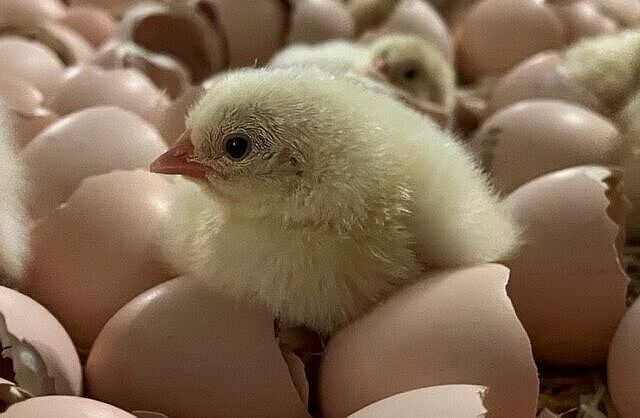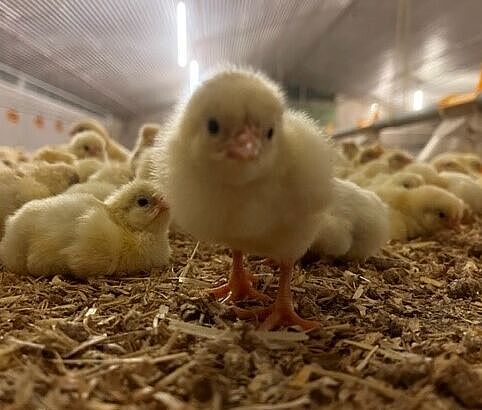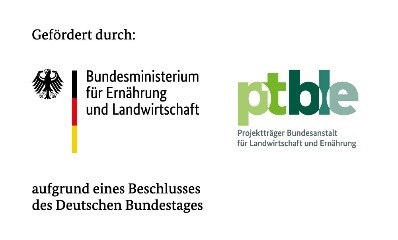Minimisation of antibiotic use in broiler farming by in-shed-hatching
The use of antibiotics in intensive animal husbandry has been discussed in public for years. In addition to animal welfare aspects, issues such as environmental and consumer protection are also addressed, as well as the emergence of antibiotic resistance in human and veterinary medicine. The establishment of strict biosecurity concepts and vaccination schemes are needed, as well as other prophylactic measures, in order to be able to further reduce the use of medicines while maintaining a high health level in livestock farming at the same time.
The concept for antibiotic minimisation developed by the Federal Ministry of Agriculture (Antibiotics Minimisation Concept of the 16th AMG Amendment, 1 April 2014) is intended to limit the development and spread of antibiotic resistance and to stop the administration of reserve antibiotics for humans to farm animals, thus preserving the effect of antibiotics as therapeutic agents for humans. The nationwide key figures on therapy frequency in farm animals have been significantly reduced since the start of the antibiotic study. While the amount of antibiotic treatment cycles in fattening pigs and fattening cattle have decreased significantly, treatments in broiler chicken farming have remained almost unchanged.
The aim of the project is to reduce the use of antibiotics in broiler chicken farming by using the "hatching in the shed" method. Generally, the chicks are being hatched in special hatcheries where they are sorted, vaccinated and prepared for transport. They may not have access to water and feed until 24 hours after hatching and transport to the holding and rearing farms. The procedures undertaken between hatching and entering the rearing farms (vaccination, transport) can be stressful for the chicks. Hatching them in the shed is intended to minimise this stress, improve general animal health, and minimise sources of infection. In the first phase of the project, farms with experience of hatching chicks inside their housing will be selected and accompanied. Based on these insights, the concept of in-shed-hatching will be implemented in conventional as well as organic model and demonstration farms during practical phase 2. In order to be able to compare animal health between the concept of “hatching in the shed” and the rearing of day-old chicks that are delivered to the farm, both methods will be applied to each farm and monitored over several fattening runs.
The staff of the Chair of Animal Health and Welfare are responsible for the hygiene aspects and the microbiological investigations. Dr. Birgit Spindler from the Foundation of the University of Veterinary Medicine Hanover is responsible for the project coordination and the survey on animal behaviour. The other cooperation partners are responsible for the climate of the animal housing and the economy.
The project is part of the Model and Demonstration Projects (MuD) Animal Welfare in the Federal Programme Livestock Production. Funding is provided by the Federal Ministry of Food and Agriculture (BMEL) on the basis of a resolution of the German Bundestag, the project executing agency is the Federal Agency for Agriculture and Food (BLE), (funding code 2820MDT243)".



